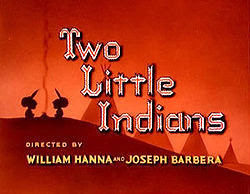Soon after I uploaded the information below, Carl Waldman wrote to me. We exchanged emails. I'm grateful for the exchange because it provides a learning moment for all of us.
Waldman was incorrectly cited in Healy and Orenski's book about flags and the website about flags (see below). Waldman's encyclopedia does not say that Nambe is "of the Tiwa Nation, one of four tribes of Pueblo Indians along the Rio Grande." Waldman is cited a LOT in the flag book. I hope he goes through it and gets in touch with the authors. Anybody using either the flag book or website should use it with great caution.
I erred in assuming that the flag book was reliable in its citation of Waldman. Believing their citation of him was accurate, I was critical of him for those errors. Those errors, in turns out, are Healy and Orenski's---not Waldman's.
Since then, I've read through Waldman's entry on Pueblo Indians. Some things about it reflect socialization/education that teaches Americans that American Indians are exotic peoples. For example, he uses the word shaman. That word is generally used to describe spiritual leaders, but it isn't used to describe spiritual leaders in the world religions. I think words like that (ones that invoke the exotic) are not helpful because they diminish our religious ways of being.
Another way in which Waldman inadvertently trivializes our ways is his description of a kiva. He says they are "ceremonial chambers or clubhouses." Ceremonial chambers is right, but clubhouses doesn't work at all. There are certain societies within our religion but they're not clubs.
A major concern with his entry is the order with which he presented the information. I'd prefer it start with present day information because I believe doing it that way goes a long way to displacing the idea that we no longer exist.
We generally use "Pueblo Revolt" rather than "Pueblo Rebellion" when talking about our movement against the Spanish in 1680. The Pueblo leader named Po'pay was from Ohkay Owingeh (formerly known as San Juan Pueblo) but worked from Taos in planning the revolt.
Last, Waldman ends the section called "Later History" with this sentence:
"Not all historic pueblos survived to modern times. Attacks by raiding tribes, such as the APACHE, NAVAJO and COMANCHE, took their toll as did diseases carried by Europeans and Euroamericans."Definitely, there were struggles with other tribes, but, it was warfare, persecution, and disease from Europeans and Euroamericans that had the greater impact on us.
I'll stop here for now. Below is
A couple of days ago, my "Nambe"
I did some research and found that the site contains the same information in a book called Native American Flags, by Donald T. Healy and Peter J. Orenski. Let's take a look at the entry (on the site and in the book) for Nambe:
The 19,000-acre Pueblo of Nambe (NAA, 281) is home to about 400 members (REAI, 30) of the Tiwa Nation, one of four tribes of Pueblo Indians along the Rio Grande (ENAT, 206-209). The others are the Keres, Tewas, and Towas.Our pueblo is 19,000 acres in size. That information is correct. Healy and Orenski's source for that is Hirschfelder and de Montano's The Native American Almanac.
Home to about 400 members? Census figures change over time. We were that size at one time, but according to the 2000 census, we were about twice that size. We'll see what the 2010 census says.
The rest of the information is incorrect. We are not "of the Tiwa Nation." There are not three others called Keres, Tewas, and Towas. Those four words are language categories. Nambe's language is Tewa. There are nineteen pueblos in New Mexico, and, some of the pueblos speak Tewa, some speak Keres, some speak Tiwa, and some speak Towa. Some of the nineteen pueblos are located along the Rio Grande, but Nambe is not one of them. We are alongside our own river, the Nambe River.
The source for that incorrect material is Carl Waldman's Encyclopedia of Native American Tribes: Facts on File Library of American History, first published in 1988. It was revised in 1999 and received favorable reviews from School Library Journal, Library Journal, and Booklist. The reviews are available at Amazon. One of the Amazon customer reviews is from L. Hunter, a writer using the book:
I'm writing a fictional novel with a Native American character and needed help in knowing him and his background. I was impressed with how easy it was to look up information by tribe and get interesting tidbits, that if I so desired, I could research further. This is definitely a writer's dream. I feel confident writing about a character from any tribe with this book in my collection.I hope that L. Hunter isn't using that information about Nambe. Waldman's encyclopedia is a good example of incorrect sources that unfortunately get used again and again, in non-fiction and fiction. I've written about reliable sources here. If you have a copy on your shelf, and your tribal information is incorrect, please let me know and I'll add it to this blog post.

